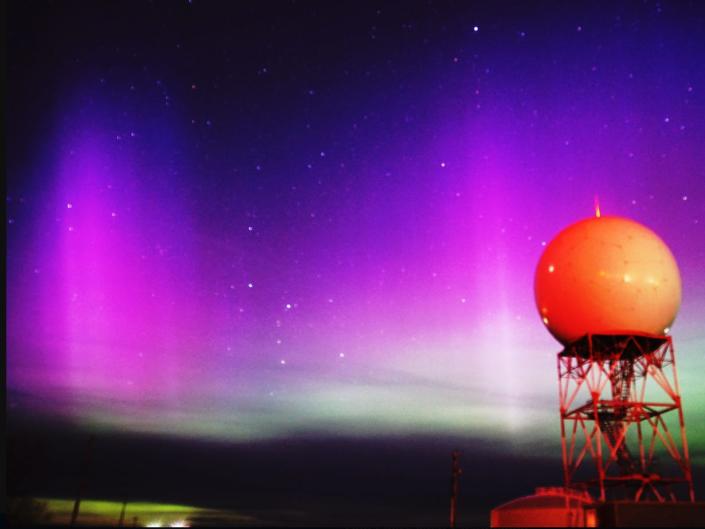A powerful solar storm is due to hit Earth on Wednesday, sparking beautiful auroras. Here's how to see them.

Views (164)

A coronal mass ejection that was released from the sun on May 7 is due to hit the Earth May 10. NASA predicts it could cause stunning auroras.
A powerful solar storm due to hit the Earth on Wednesday could spark brilliant auroras.
Auroras have been seen as far south as California, Utah, and New Mexico in recent months.
Expect to see more auroras in coming months as the sun's activity reaches a peak.
The coming auroras have been predicted after the sun released some plasma during a coronal mass ejection on Sunday that is currently traveling toward us at breakneck speeds.
NASA predicts this plasma will hit the Earth on Wednesday, exciting our outer atmosphere and helping auroras shine.
It will be the latest in a series of solar storms that have hit our planet in recent months, as the sun nears a peak of activity.
Here's how to spot the dazzling spectacle:
If the storm hits as a G3, the aurora could descend to mid-latitudes and could be seen in states like Oregon, Nebraska, and Virginia, per spaceweather.com.
But geomagnetic storms are notoriously hard to forecast and when it reaches the Earth, the storm could be weaker. Or it could be stronger.
A recent example is a G4 storm that hit the Earth in March and caused aurora seen as far as Phoenix, Arizona. It had originally been expected to be a G3, but a later eruption of the sun made the storm more powerful.
If you have clear skies, head for a place where there is low light pollution, away from city lights.
Prepare for cold weather with blankets and hot beverages. You may have used your phone or looked at screens to get you where you need to go, so be patient, and let your eyes adjust to the darkness.
The flare also hurtled a coronal mass ejection (CME), a cloud of plasma and magnetic fields, toward our planet. This travels more slowly, though it can reach speeds of 600 miles per second. As the CME hits our ionosphere — a charged layer that surrounds the Earth — it will excite particles in the sky that light up to create the aurora.
Because the storm is due to hit the Earth as a G3, there's a chance aurora could be seen further south than usual, though we should be safe from the worst effects of geomagnetic storms, like grid disruptions.
As the sun's activity ramps up, we're also seeing more stunning solar phenomena.
These bursts of electromagnetic energy can be quite dangerous, as they affect everything from the power grid to GPS signals.
"Space weather can ground flights," Owens previously told Insider, adding that the Federal Aviation Administration "won't allow flights if they don't have both radio and satellite communications."
This solar flare has already affected radio signals sent from Earth, which need to bounce off the ionosphere to get from one point to the other — that's less efficient in rough space weather.
As the magnetic fields from the sun crash into the Earth, they can also cause grid surges that can overwhelm power systems and underwater pipelines.
This story was originally published on April 24, 2023, and was updated to reflect information from the latest storm due to cause bright auroras.
Correction: April 28, 2023 — An earlier version of the story misstated the speed of the winds traveling from the sun. It was 600 miles per second, not 600 miles per hour.
0 Likes
